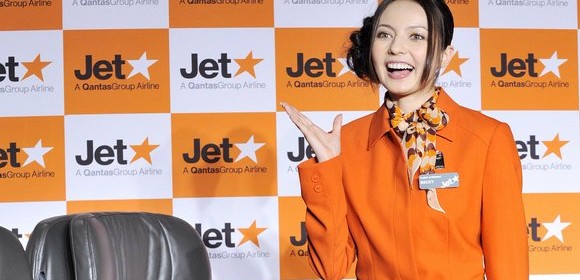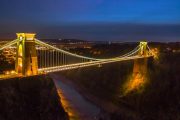In 1972, the Lonely Planet founder Tony Wheeler made an epic overland trip to Australia. This year, he tried the same route a rather different way
When the Beatles flew to Australia in 1964, their flight made seven stops — in Zurich, Beirut, Karachi, Calcutta, Bangkok, Hong Kong and Darwin — before arriving in Sydney. That was an improvement on the pre-jet-travel 1950s, when the journey took several days, with a couple of overnight stops. Today, there are a dozen airlines that will whisk you down under with just one stop, in less than 24 hours. How dull. All that distance, and all you’ve seen is a couple of movies and the duty-free shops in Changi or Dubai.
I’ve made that one-stop trip more times than I care to remember, so this year I did things slightly differently. I flew out of Gatwick on an easyJet flight to Marseilles, and a month and 21 more flights later, I arrived home in Melbourne. Yes, I did the entire trip on “low-cost carriers”, but it was easy to organise, I never suffered more than an hour or so of delay, getting to and from all those airports was no hardship, and although I booked my budget flights as I went along, only once did I fail to find a seat on the flight I wanted. As a bonus, I never had any baggage problems — though I travelled light, with just a carry-on.
A month of travel gave me time to get at least a taste of every city I stopped at — although Marseilles was the only one I hadn’t visited before. It was my second trip to Istanbul in 12 months; other cities I’d not been to for more than 20 years. In the interim, Bangalore had not only changed its name to Bengaluru, but changed from a sleepy southern Indian city into a subcontinental Silicon Valley, complete with a Lamborghini dealer next to a “microbrewery boutique beer pub”.
 The airlines were interesting, too. I tried most of the big names in the budget-airline business, and none of them was a horror story. Not even Ryanair, which in its kinder, gentler new incarnation provided probably the most generous carry-on baggage allowance of my whole trip, and the best views from my window seat. Between Marseilles and Rome, I spotted St Tropez and the strange Mediterranean island of Montecristo, then got a brief glimpse of Lake Bracciano, just north of Rome.
The airlines were interesting, too. I tried most of the big names in the budget-airline business, and none of them was a horror story. Not even Ryanair, which in its kinder, gentler new incarnation provided probably the most generous carry-on baggage allowance of my whole trip, and the best views from my window seat. Between Marseilles and Rome, I spotted St Tropez and the strange Mediterranean island of Montecristo, then got a brief glimpse of Lake Bracciano, just north of Rome.
Beyond Europe, I flew with carriers I was familiar with, such as Turkey’s successful Pegasus and India’s energetic IndiGo. There were some I’d never heard of before, including Air Costa, a new Indian start-up whose Embraer 190 to Madras (Chennai) was probably the neatest little aircraft of the trip. Not that any of them were less than tidy — and quite often shiny and new, as if they’d rolled off the assembly line last week. In fact, the average age of my budget flights’ fleet was just four years. In contrast, British Airways doesn’t have a single 747 less than 15 years old, and some of its jumbos are touching a quarter of a century in the air.
Apart from a few bumps and grinds with Ryanair — and I can hardly blame it for the bad Italian weather — I didn’t have any white-knuckle incidents, either. That’s despite deliberately choosing Indonesia’s Lion Air for my flight to Bali. In 2013, it managed to ditch a new 737 in the sea, just short of the runway. That aircraft was a write-off, but all passengers and crew survived. Some waded ashore, snapping smartphone photos as they went. My Lion Air flight landed without fuss and on the runway.
 Looking out the window on my flights through Indonesia provided glimpses of a problem that could have brought my England-Australia air trek to a grinding halt: volcanoes. Flying over Java and Bali often brings home why the archipelago has been labelled the Ring of Fire.
Looking out the window on my flights through Indonesia provided glimpses of a problem that could have brought my England-Australia air trek to a grinding halt: volcanoes. Flying over Java and Bali often brings home why the archipelago has been labelled the Ring of Fire.
One of those volcanoes in particular, Mount Raung, in East Java, had been interrupting flights to Bali only days before I arrived. Fortunately, it calmed down for my arrival and departure, then sputtered back into action as soon as I’d gone.
Part of the budget-airline success story is down to the abandoning of lots of the traditional airlines’ burdens, such as airport offices and ticket counters, in favour of internet bookings and print-it-yourself boarding passes. Curiously, this embrace of the digital world hasn’t been such a success in India, where all the talk of ecommerce, software giants and call centres seemed merely to paper over a hardcore passion for bureaucracy and a deep suspicion of credit cards. More than once I had to show mine at check-in to prove I wasn’t a fraudster. The urge to ask for my parents’ wedding certificate was clearly only barely being suppressed.
 Comfort? Well, the longest flight I took was less than three hours, short enough to live with even the squeeziest non-reclining seats. My fellow passengers? Everybody from families on their big holiday of the year and stag parties to migrant workers heading back to India from the Gulf states.
Comfort? Well, the longest flight I took was less than three hours, short enough to live with even the squeeziest non-reclining seats. My fellow passengers? Everybody from families on their big holiday of the year and stag parties to migrant workers heading back to India from the Gulf states.
My route intersected with lots of earlier aviation checkpoints. I stopped in Dubai and Singapore, probably the two most popular touchdowns on today’s one-stop routes between London and Australia. I made my Australian landfall in Darwin, where the first flight from London to Australia landed — made by a wood, canvas and wire twin-engined Vickers Vimy biplane back in 1919. Even in the Beatles’ era, 707s still had to stop at Darwin to refuel between the Far East and Sydney.
There was one other historic journey my no-frills odyssey overlapped. My very first travels from London to Australia were made at ground level, following the overland route — the hippie trail of the 1960s and 1970s. Perhaps I was just reliving that era, using today’s magic bus.




